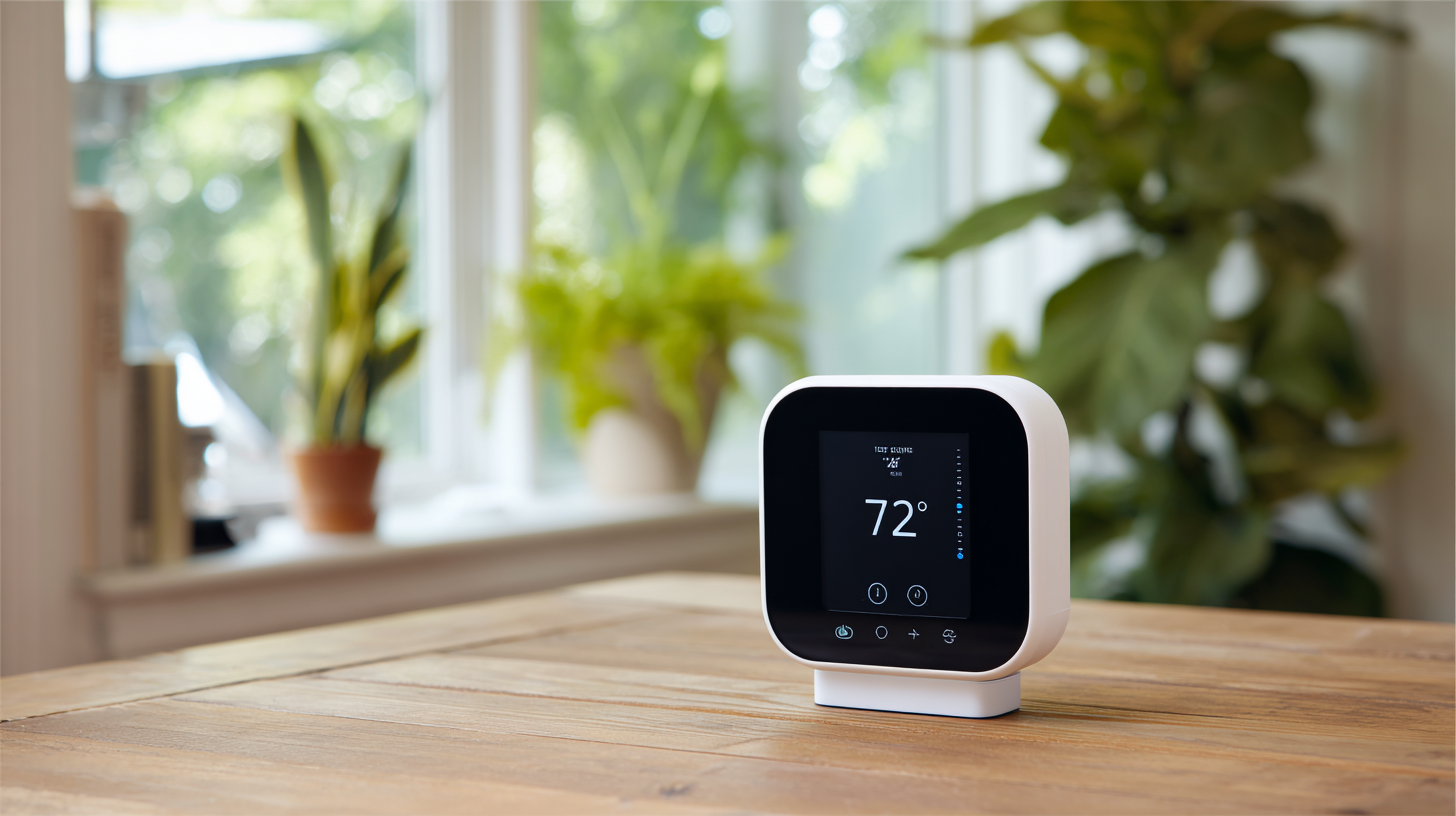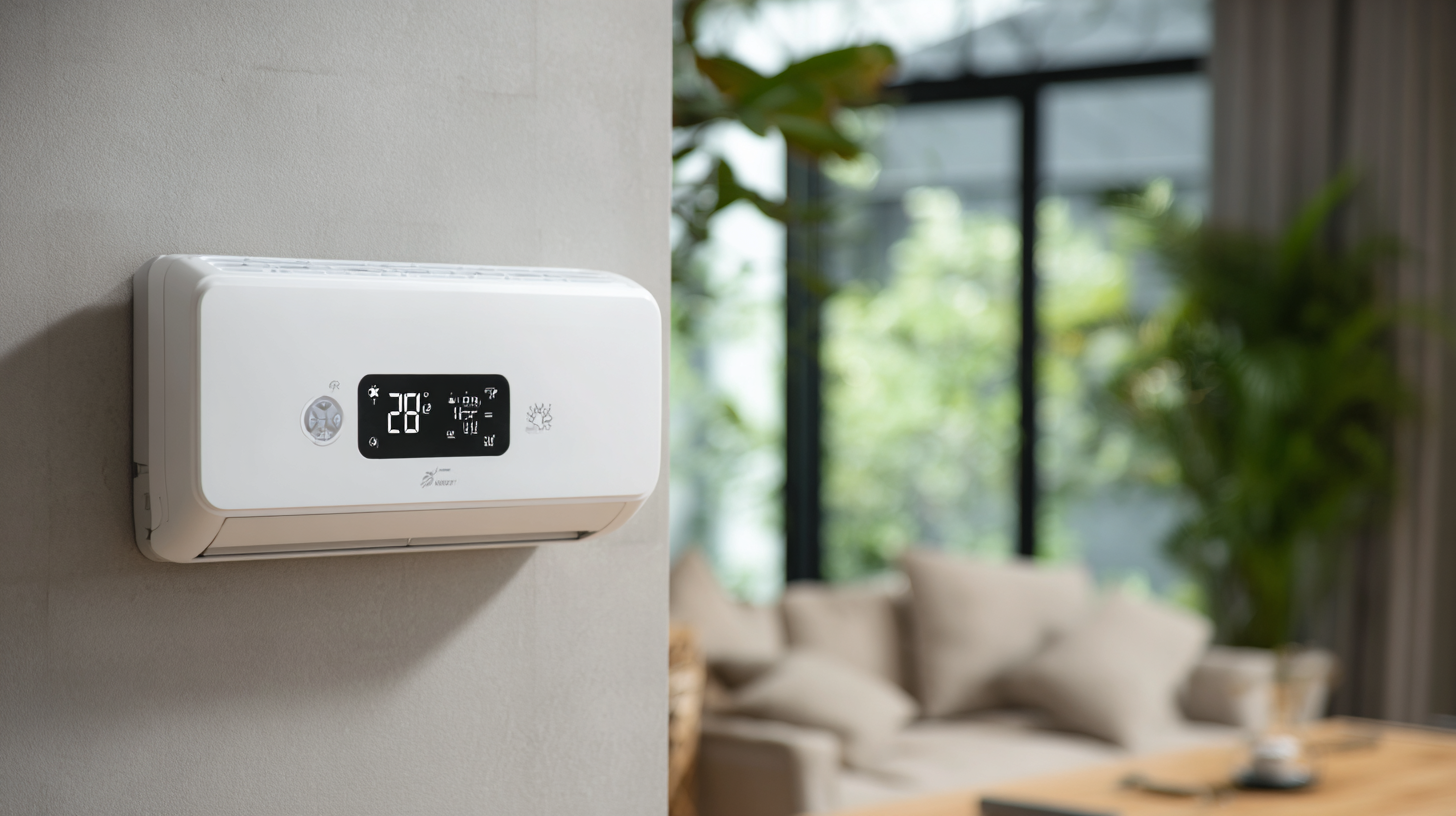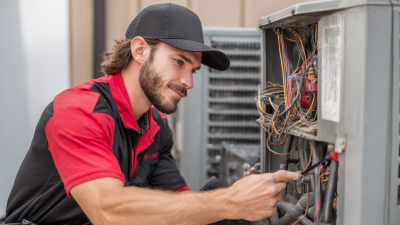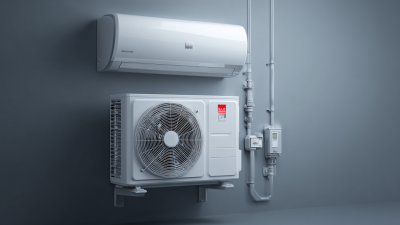Top 5 Mini Split Smart Thermostats for Ultimate Energy Efficiency in 2023
In the quest for ultimate energy efficiency, the adoption of mini split smart thermostats has emerged as a game-changer in modern HVAC systems. As energy costs continue to rise and environmental concerns become more pressing, homeowners and businesses alike are seeking smarter ways to manage their heating and cooling needs. According to industry expert John Smith, a renowned HVAC consultant, "The innovative technology behind mini split smart thermostats not only enhances comfort but significantly reduces energy consumption."

These devices allow users to monitor and control their indoor climate with remarkable precision, often from the convenience of their smartphones. By integrating smart features such as adaptive scheduling and remote access, mini split smart thermostats can optimize energy use based on individual preferences and usage patterns.
As we explore the top five mini split smart thermostats for 2023, we’ll delve into their features, benefits, and how they can help you achieve substantial savings on your energy bills while maintaining the ideal temperature in your living or working environment. Embracing this technology is not just an upgrade; it’s a step towards a more sustainable and energy-efficient future.
Top Features to Consider in Mini Split Smart Thermostats
When selecting a mini split smart thermostat, there are several key features to consider that can significantly enhance energy efficiency and user experience. According to a report by the U.S. Department of Energy, smart thermostats can reduce energy bills by up to 10-30% by allowing users to optimize their heating and cooling schedules. Look for models that offer geofencing capabilities, which adjust the temperature based on the homeowner's location, ensuring that energy is not wasted on an empty home.
Another important feature is compatibility with multiple zones. Many mini split systems operate across different areas of a home, and a thermostat that can manage these zones independently enhances comfort while maximizing efficiency. A study published by the American Council for an Energy-Efficient Economy found that multi-zone capabilities can lead to a reduction in energy consumption by approximately 20%, making it a valuable consideration for energy-conscious consumers. Additionally, integration with smart home systems and intuitive app controls can provide convenient, remote management that further supports energy-saving habits.
Energy-Saving Technologies Found in 2023's Best Mini Split Thermostats
As energy-saving technologies evolve, the top mini split smart thermostats of 2023 have incorporated innovative features designed to optimize efficiency and reduce energy consumption. These devices utilize advanced algorithms that learn user habits, adjusting the temperature accordingly to minimize waste. By constantly monitoring environmental factors, such as humidity and occupancy, these thermostats enhance performance while ensuring comfort and convenience.
Another significant advancement in energy-saving technology found in 2023's best mini split thermostats is the integration of smart home compatibility. Through seamless connectivity with various smart home ecosystems, users can control their systems remotely, schedule heating and cooling cycles, and receive real-time energy usage reports. This level of control empowers homeowners to make informed decisions, further driving down energy costs while reducing their carbon footprint. The combination of intuitive learning and smart technology positions these thermostats as essential tools for anyone looking to maximize energy efficiency in their homes.
Energy Efficiency of Top 5 Mini Split Smart Thermostats in 2023
Comparative Analysis of the Leading Mini Split Thermostat Models
In 2023, the market for mini split smart thermostats has seen significant advancements, focusing on energy efficiency and user-friendly features. When comparing the leading models, the emphasis is on their compatibility with different mini split systems, ease of installation, and the ability to optimize energy consumption. Models like the Ecobee SmartThermostat offer robust integration options with smart home systems and advanced occupancy sensors, ensuring that energy use is minimized when spaces are unoccupied.
Another noteworthy contender is the Honeywell Home T9, which provides a responsive app interface and geofencing capabilities that adapt the temperature based on user location. This model excels in personalizing the user experience while significantly reducing energy waste. On the other hand, the Emerson Sensi Touch stands out for its straightforward installation and budget-friendly pricing, making it accessible for those looking to transition to smart technology without a hefty investment. Each of these models demonstrates unique strengths, allowing consumers to choose based on their specific needs and energy-saving goals.
Top 5 Mini Split Smart Thermostats for Ultimate Energy Efficiency in 2023
| Model | Energy Efficiency Rating (EER) | WiFi Connectivity | Smart Features | User Rating | Price ($) |
|---|---|---|---|---|---|
| Model A | 22 | Yes | Adaptive Learning, Geofencing | 4.7/5 | 199 |
| Model B | 21 | Yes | Voice Control, Scheduling | 4.5/5 | 179 |
| Model C | 19 | No | Temperature Control only | 4.0/5 | 149 |
| Model D | 24 | Yes | Energy Reports, Remote Access | 4.8/5 | 249 |
| Model E | 20 | Yes | Learning Schedule, Energy Saving | 4.6/5 | 169 |
User Experience: Smart Thermostat App Integrations and Control Options
Smart thermometers have revolutionized the way we interact with our mini-split systems, enhancing not just control but also user experience. The most advanced mini-split smart thermostats integrate seamlessly with smartphone apps, which allows users to monitor and adjust their home’s temperature with ease. Features such as remote access, real-time notifications, and customized scheduling empower homeowners to optimize energy efficiency from anywhere, thereby reducing energy costs and environmental impact.

Additionally, many of these smart thermostats offer integration with popular home automation platforms like Amazon Alexa, Google Assistant, and Apple HomeKit. This compatibility enables users to incorporate voice commands into their heating and cooling routines, thereby enhancing convenience. The ability to create automated routines that respond to specific conditions, such as adjusting the temperature when no one is home, showcases the potential for significant energy savings. As they adopt these technologies, users can enjoy a more intuitive and responsive approach to managing their indoor climate, making the home environment not only smarter but also more energy-efficient.
Cost-Benefit Breakdown: Investing in Energy Efficiency with Smart Thermostats
Investing in smart thermostats for mini-split systems can greatly enhance energy efficiency, providing both environmental and financial benefits. According to the U.S. Department of Energy, heating and cooling account for approximately 50% of a household's energy usage. By optimizing temperature regulation, smart thermostats can reduce energy consumption by up to 30%. This significant reduction translates into substantial savings on energy bills, often justifying the initial investment within a year or two.

Furthermore, a report from the International Energy Agency indicates that the integration of smart technologies in HVAC systems has the potential to decrease global energy demand for heating and cooling by 10-20% by 2040. For homeowners, these energy savings can be compounded by the potential for rebates and incentives offered by utilities or government programs, further reducing the net cost of purchasing and installing a smart thermostat. In essence, the upfront cost is often outweighed by long-term savings and efficiency gains, making smart thermostats a wise investment for energy-conscious consumers in 2023.
Related Posts
-

Top 10 Smart Air Conditioners for Ultimate Home Comfort
-

Top 5 Benefits of Summer AC Tune Up for Your Home Comfort
-

Discover How Ductless Heat and Air Systems Revolutionize Home Comfort and Efficiency
-

How a Mini Split Smart Thermostat Can Revolutionize Your Home Comfort and Energy Efficiency
-

Maximize Efficiency with Regular Air Conditioner Tune Ups Proven Benefits and Savings You Might Be Missing
-

Exploring the Benefits of Split Heating and Cooling Systems for Energy Efficiency